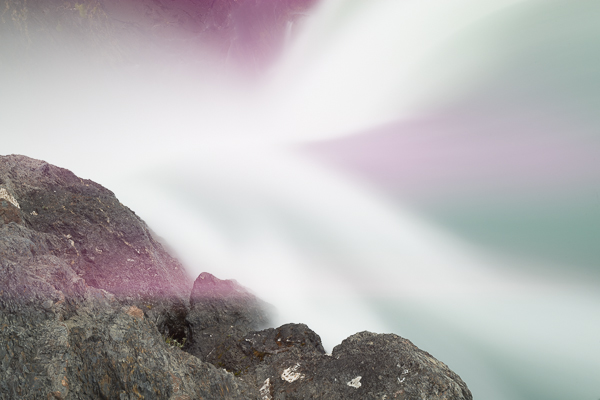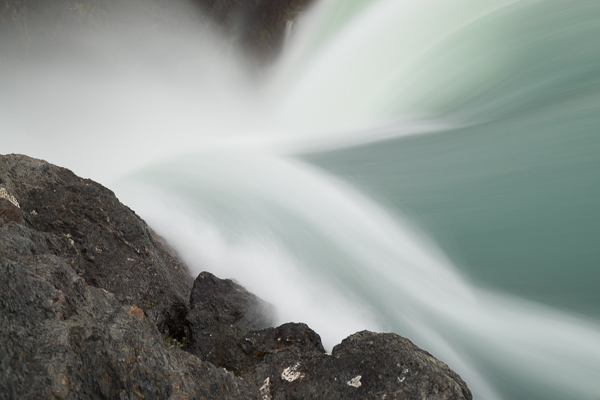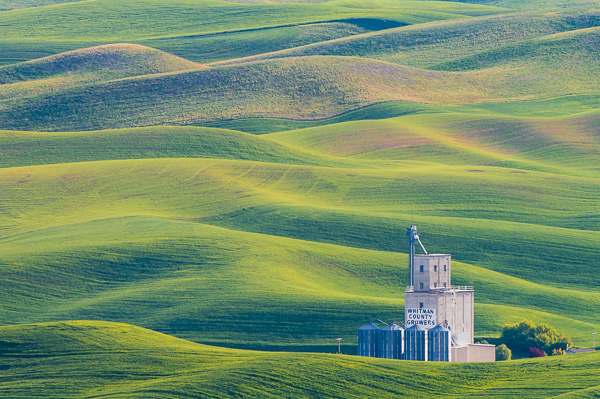Images taken with heavy ND filters will occasionally show a strong magenta cast. Almost all ND filters transmit some infrared wavelengths, and this IR light is one of the primary causes of the magenta cast. At the same time, some digital camera sensors are more sensitive to IR than others, and in my experience the Nikon D800/D800E twins fall into this group. However, for most situations there is a simple solution.
My favorite ND filter is the 7-stop Tiffen IRND 2.1 (which I think is an excellent bargain in terms of ND filters). But even this filter, with has some IR control as part of its design, can result in magenta contamination. Here’s a frame taken at the edge of a waterfall using this filter and my D800E, with the lens pointing almost straight down. The resulting image is a worst case example.

The solution I’ve found: close the camera’s eyepiece shutter. No matter if mirror lockup is used, or the timer delay, or whatever…close the eyepiece shutter. Under any circumstance, the D800/D800E cameras are very sensitive to light coming through the eyepiece, so closing the eyepiece whenever shooting from a tripod is a good idea. In the above example, the eyepiece is open and positioned toward the sky. Here’s another shot, same situation as the previous image, but with the eyepiece shutter closed. Big difference.



